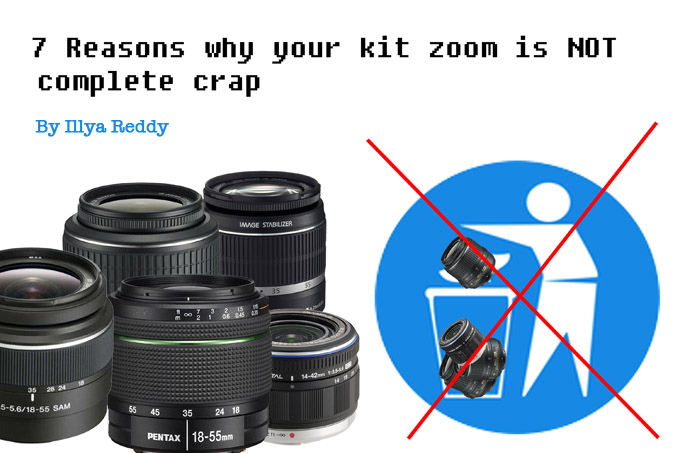
I have always been told by more experienced photographers, that my kit lens (I used to have a Nikon one for my DSLR) is just a big body cap. And it made me hate my lens too, so I sold it and bought nice fast prime. It was like ìHo-Ho, here is your time Mr.Bresson younger, now your photos are going to be amazing, boy. Yeah!î. But no major difference happened. And during my photography life I learned about how my gear does not matter (more about it in my previous post HERE.
I mostly shoot street photography. It is my passion. But in this post I’d like to share with you my set of black and white non-street photographs. Part of them is family album. All of photos in this article were made with Olympus 14-42mm kit zoom and my favorite classic, the Olympus E-P1.
And before I start I want to clarify: I do LOVE good glass and I definitely prefer primes over zooms. So there is no reason telling me that are better lenses. I completely agree that a kit zoom is not a great lens and I can I rather put 17mm prime or any other prime in my bag. All I want to tell is that this lens is underestimated. Many photographers hate it, but I am sure that this piece of plastic and glass can find its place in almost everyone’s camera bag.
So let’s start. Here you go: 7 reasons why you should love your kit zoom:
1. It is cheap
This is the main point. Nikon 18-55mm costs under $140 and Nikon’s gorgeous 17-55mm costs over $1600. First is hated, second is loved. Why? 17-55mm is more than 10 times more expensive. But is it a 10 times better lens or does it produce 10 times better images? Nope. 18-55mm is much more kick-ass lens for its price than the professional 17-55mm. So for the price it is actually better!
And a kit lens is even cheaper when it comes included with your camera. With Olympus PENs you can get it for 100$ or even less. It’s the same price as SLR magic toy lenses, which are fun (just purchased one BTW) but optically can’t match the real lenses.
2. IQ is not that bad
I used to have the 18-55mm Nikon lens and I now have the 14-42mm in my camera bag and these two are not bad at all. The Nikon is slightly better but the Oly is still OK for most of the situations. I’ve heard that the Lumix kit zoom is even sharper than the Olympus one.
And such an irony that my 14-42mm has even less color fringing than 17mm pancake, which as a prime supposed to have better IQ. And 18-55mm paired with Nikon D40 was a bloody sharp combo, to be fair: minimal distortion, almost no color fringing and that kick-ass sharpness.
3. Nice focal lengths
28mm, 50mm and 90mm is the classic prime set of old school photographers (though some may consider 35mm instead of first two, me too). All these focal lengths are included in every kit zoom speaking about 28-85mm EFL ones and even more with the 28-190mm ones (such as 18-135mm from Canon, Nikon and other SLR brands). So it is suitable for most types of photography and allows you to think creatively if you want, not limiting with one focal length. Also it is great if you want to check if certain FL is suitable for you before buying a prime, for example. Then, maybe, after 20 years 28-85 zoom will be classic one, but even today it is the most classic lens among other zooms.
These are shadows on the museum wall
4. Macro performance
Can’t tell about all kit zooms, but these two, what I used, have pretty nice macro capabilities. At the maximum FL they can come up close to 20-25 cm to your subject. Personally I do not take macro shots and so that do not have macro lens. But it was a pleasure to find out that my kit lens is able to take pictures of film. It is a nice way to save money on scanning if you don’t shoot film much.
My color film shot on Kodak Profoto XL
5. Reasonably small
Of course size wise pancake primes are sure winners, but still, kit zooms are the smallest among other zooms. And Panasonic works intensively in this area as they took the Olympus idea of collapsible zoom and made it even better with their 14-42mm Power Zoom. Unfortunately this increased the price, but this lens is as small as a pancake prime, when collapsed, and still much more compact than competitors when turned on.
My Grandma’s chickens and a cat watching them from the other side of the window
6. Worlds best lens for beginners
Since film SLRs camera manufactures always include 28-85mm lens with their entry-level models. And they definitely have reasons for this. Though advanced shooter will be happier to see a fast standard prime, most of the beginners just NEED to have a lens, which includes 4 classic FLs (28, 35, 50, 90). It will help them to try most kinds of photography and find themselves in this art. Of course, most of them will grow up and buy new gear, but this old kit zoom will always be like first step, or first teacher.
Saw this lonely girl in a hospital. There were almost no people and she was sitting waiting for her doctor. Her look was so dreamy that I couldn’t resist taking a picture
7. Even PROs are using kit zooms
It is hard to believe, but PROs, who make money with photography, don’t neglect using these lenses as well. A lot of paparazzi use small cheap lens for close up reportage with flash. It is quite dangerous work for equipment, but they don’t worry about cheap one and concentrate on work.
So here it is: you have 7 reasons to love your old crappy cheap body cap with glass 😉
Thanks you guys for reading, and huge THANK YOU to Steve for this beautiful website. (no, thank YOU Illya)!
If you are interested in my street photography, feel free to visit my Flickr page!

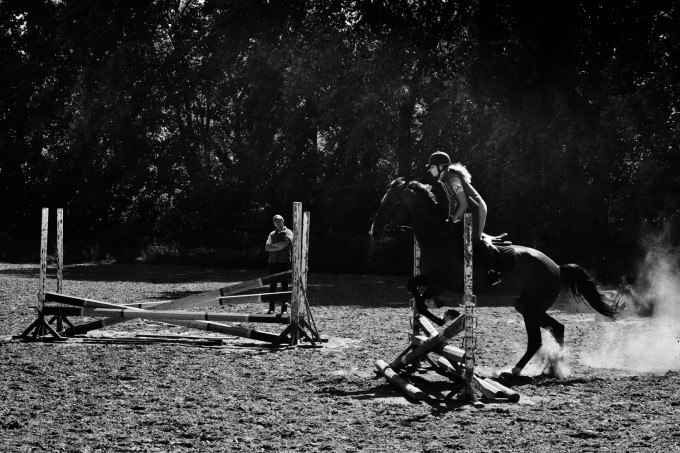
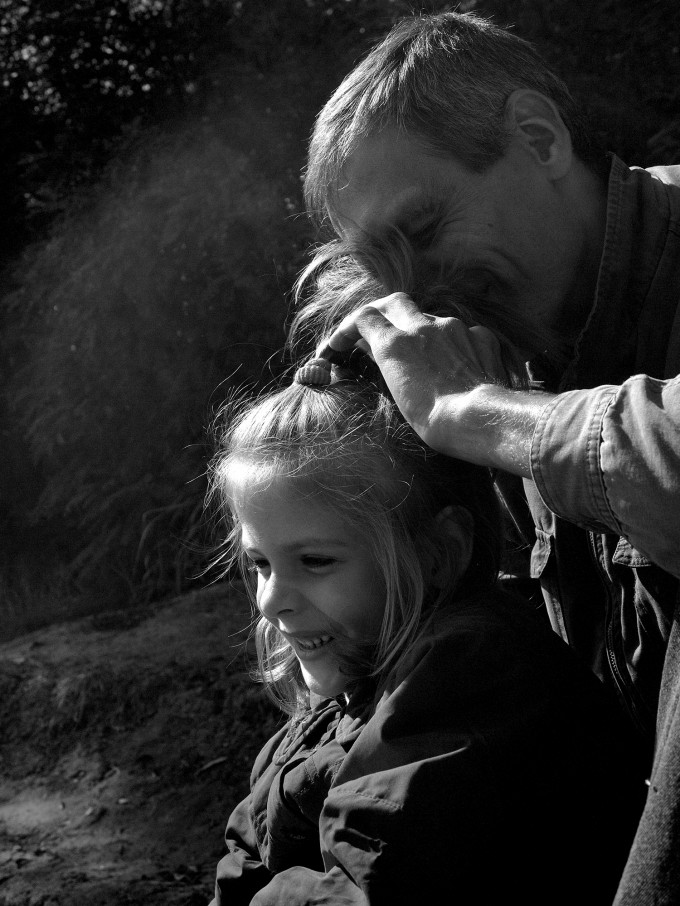
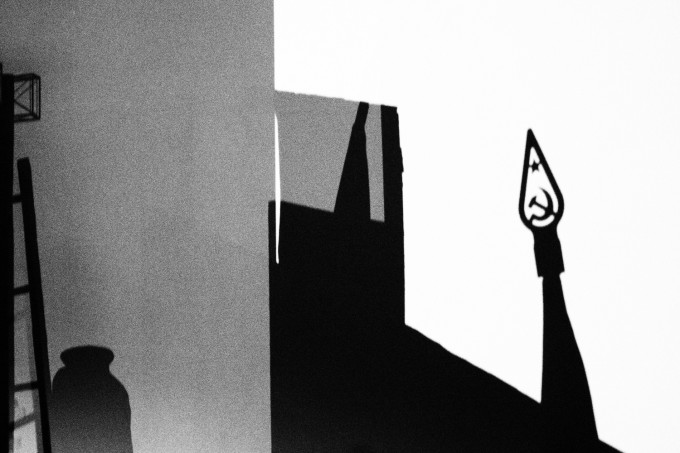
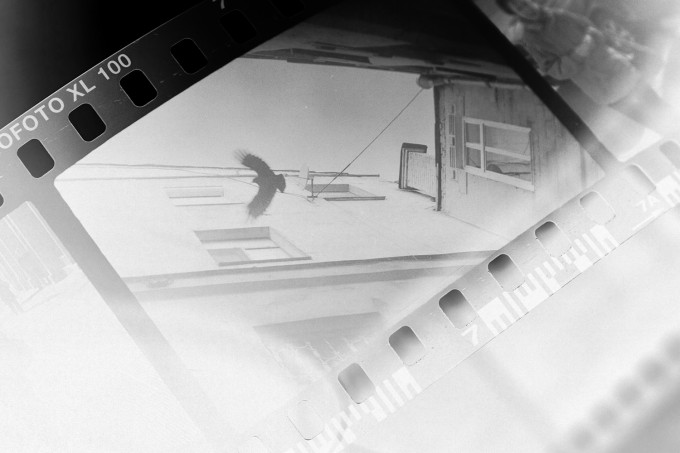
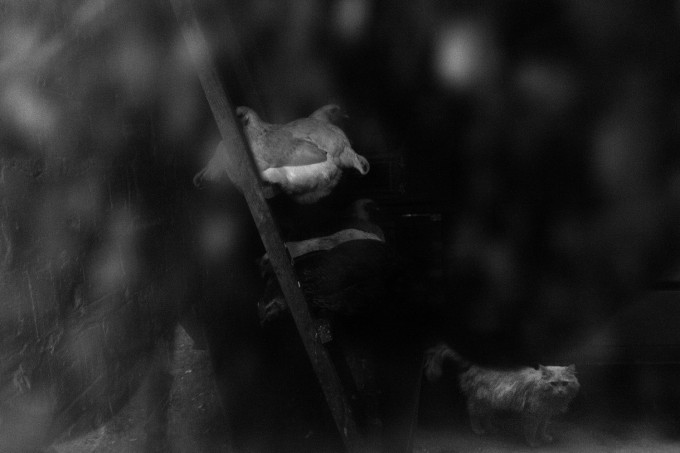
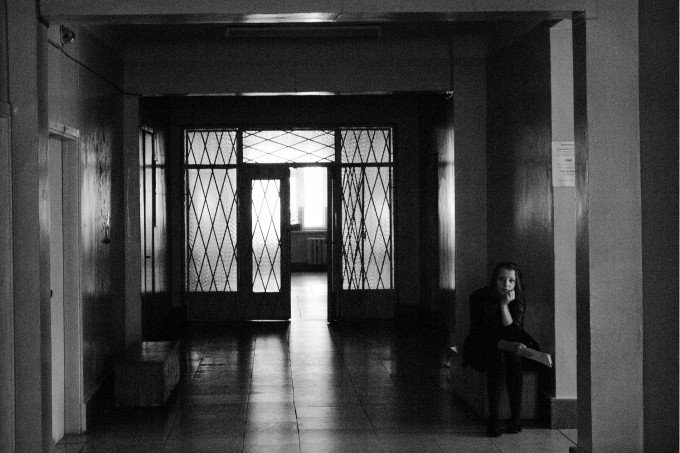
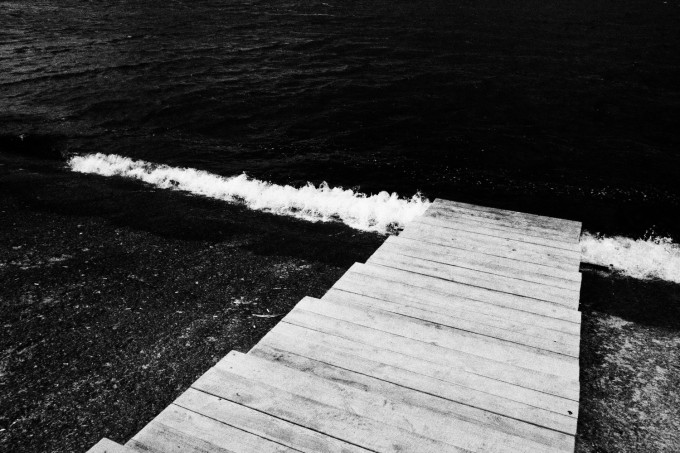

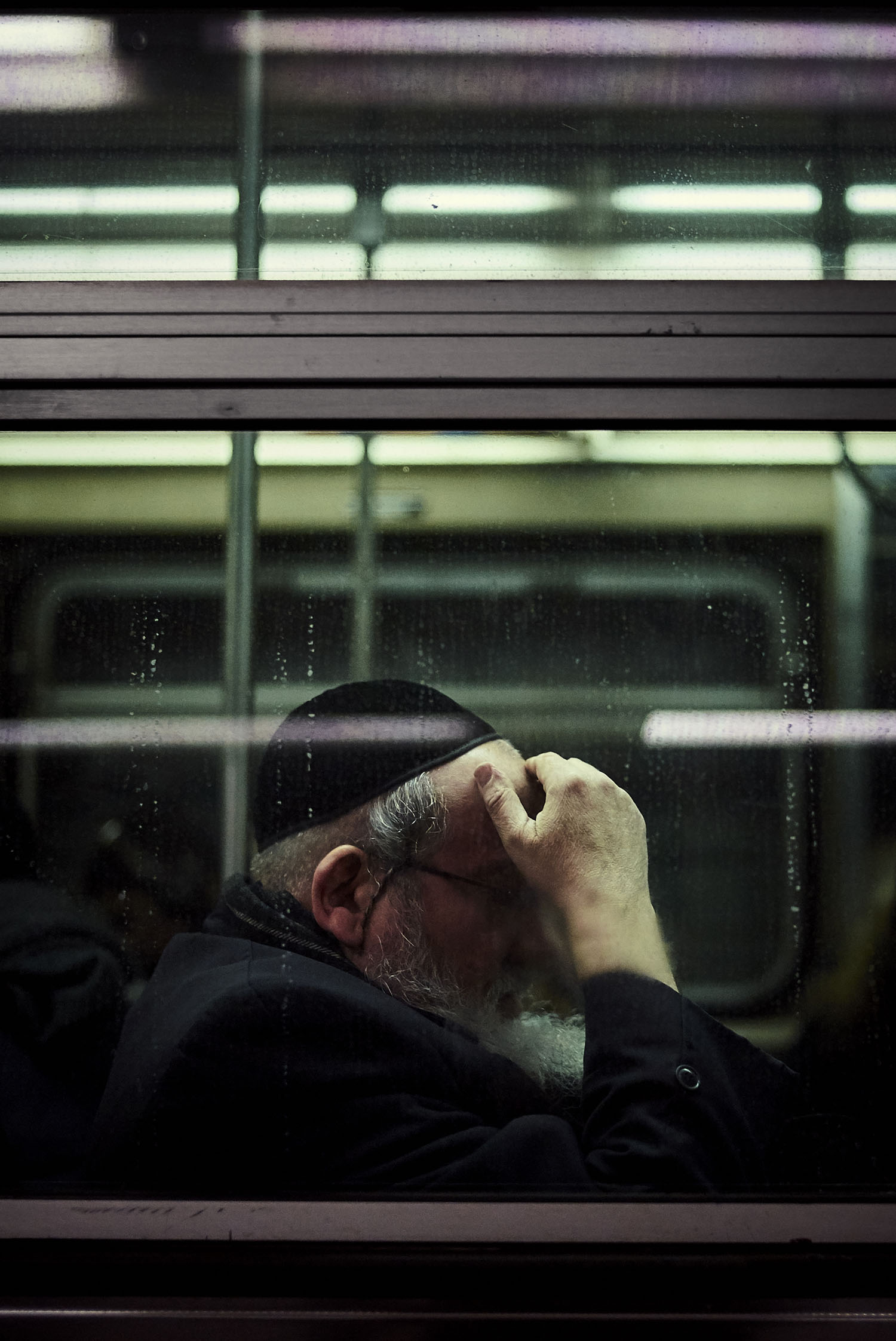
I think photographers should use the kit they have. Constantly lusting after kit that you don’t have is often an excuse used by photographers to explain why their photos aren’t any good!
I’ve been taking portraits for only a year. When I started out, I bought a Nikon D90 that came with an 18-105mm kit lens. I’ve taken hundreds of portraits over the past year and for most of my shots, I still use the kit lens. I like the flexibility of being able to get wide shots and close ups without having to do a bunch of footwork. About 1/4 of the time, I use the cheap 50mm 1.8 prime. It’s a great lens – super sharp and really fast. In the past, I’ve rented the Nikon D700 and the 28-70mm tank. I think they’re exceptional pieces of equipment, but not ones that I can currently afford. I still drool for a full frame sensor and some faster glass, but I’m happy with the results I’ve achieved with my D90 and kit lens. I’m sure that when I am able to afford a better camera and glass that I’ll never want to go back the D90 and DX lenses. BUT, they are NOT crap by any stretch of the imagination.
Sigh……
Steve, We regularly offer a 10-week B+W photo class for beginners, instructing them to have a film camera that could be used manually. Long ago there was a class etched in my memory. There were all sorts of cameras including basic SLRs to pro cameras. I even think there was a Hasselblad.
One care-free young lady ‘broke the rules’ and showed up with a point and shoot – the only camera she could afford. Guess who ( not what ) took the most captivating pictures by a country mile…
Steve, I have enjoyed the your site, especially the Daily Inspiration. Do I like all the work? Truthfully, no, but it is a place to see work and passion by experienced photographers. I think the continual, negative technical feedback banter is ruining the experience for me and perhaps others. I no longer visit daily or even weekly. I’m not sure it can or should be moderated out.
Good luck and so long,
Chris
Nice words, nice pics. Thanks!
I hate carrying things around with me and so the lighter the gear the better. What you choose to take out is going to be a compromise unless you take a huge bag of stuff out. Personally I hate changing lenses and therefore there is an advantage to the ‘kit’ zoom, although of course you are limited with fairly small apertures. The best compromise for me would be a equivalent to a 35mm lens, although I like wider. I find a 50mm lens too telephoto for most situations.
I find most lenses will give sufficient acceptable results depending on the output medium- too many amateurs are worried about the size and capability of their equipment and how they will be able to perform with it- also they worry needlessly the same amount about their photographic equipment…
agree with you. I’m too 35mm guy (focal length-wise obviously 🙂
Illya
Kit lenses suck. I told my buddy to dump his Nikon 18-55 VR and get the Nikon 35 1.8 for his D5000. His shots improved drastically and has now developed solid technique.
i did the same thing with my d40 while ago. 🙂
don’t think that bigger amout of bokehhh improved his photography.
Illya
Excellent post. I use the 18-55 on my Pentax ist DS all the time with great results. Typically I stop it down to f11 and use a tripod for landscape stuff. I always use MLU, too.
Great article, I’ve got loads of great primes, two professional zooms and the cheap as chips Panasonic 14-42mm that came with one of my micro four thirds cameras. The Panasonic 14-42mm can be bought in mint condition for about sixty pounds and there are times when I need to take one maybe two lenses with me and it serves a purpose. I was going to sell it but I’d get little money for it and it comes up trumps for me so long as I work within its limitations:
http://www.flickr.com/photos/daniel_came/6685958817/in/photostream
http://www.flickr.com/photos/daniel_came/7178285172/in/photostream
Great pics!
I’m hardly going to set myself up as a guru, but I’ve been photographing for quite a long time, and in my experience the m.Zuiko 14-42 (any version) is quite remarkably good. And I’ve got more m4/3rds lenses than I should have or need. From a purely technical IQ point of view,the only one that significantly beats it is the Olympus 45 1.8. Sure, there are situations where for example by default 20 1.7 is “better”. but actually with a little thought and repositioning there’s not much the 14-42 can’t do pretty much as well.
A nice poss. Thanks for your effort.
There is a lot of ritualistic cant in such assertions as “zooms make you lazy”. I certainly am guilty of repeating such nonsense myself. “Cropping is for farmers” is one I took to heart in the days when I shot only E6 (slide film). “Real” photographers work in B&W the darkroom enthusiasts would reply, looking down their noses at my colour-saturated slides.
A salient point is end use. I have a friend – a professional writer and photographer – who has taken to cycle touring. His travel books are small format, not coffee table; the photos illustrate the words rather than vice versa. Obviously, a kit zoom is ideal size-wise, and he has the photographic nous to make images which have impact, even when reproduced in a paberback travelogue.
Your own B&Ws are proof in the pudding. I’d be proud of any of them – none suggest that you are photographically lazy. Kudos.
Really controversial. Pentax kit zoom is the best cause some of them come weather sealed. Nikon kit lens is okay and made some reasonably good pictures with my D60 which was my first DSLR. Though 17-55mm is probably is loads better due to constant aperture throughout zoom range however you can get the 2x expensive Tamron and get great results and have the extra stop when you need it.
Reason #8: If your kit lens is lost, stolen or damaged, you’re not out a lot of money. And it won’t cost much to replace it.
It is included in #1 and 7 🙂
Thanks
Illya
If you got a photograph of Barak Obama masturbating in a public toilet, on your iPhone, under-exposed, with a little camera shake, and composed poorly, that photo will still sell to tabloids for $1,000,000+++
The point is that a Caravaggio is not necessarily better or worse than a Van Gogh or Picasso, just because it was painted “better” with more life-likeness.
There’s a lot of snobbery both in criticising gear and skill of a photographer. Whatever it is that makes a “good photo”. I challenge that there is no such thing as good/bad gear/photographer/photo. I challenge that there is only a photograph that speaks to you, or grabs your attention, and those that don’t.
Hear, hear! Well put!
I must admit, in a perfect world, I prefer primes. I bought my first film SLR in the mid 1970s… a 100% manual Minolta SRT-200 with a 50mm f/2.0 Rokkor-X prime lens. I got by with that combination literally for years. Today, I own several cameras – both a 2-body Pentax DSLR kit and a micro four-thirds kit with both Panasonic and Olympus bodies. But I own – and use – both primes and zooms.
Here’s my take: Primes are excellent for all of the stated reasons by many posters above. But they are not always practical in changing or some specialized conditions, which is when I use my zooms. Moreover, there aren’t many modern zooms that one can call truly bad. Computerized lens design and modern coatings have helped matters greatly.
Frankly, the kit zooms that many thought were crap during the last decade were actually film camera kit zooms that were fine withnfilm and on earlier digital cameras. But they weren’t designed with digital imaging in mind and weren’t intended for higher resolutions – say, anything greater than 10mp. Sony’s 18-70 is an example of this. But the company’s more recent 18-55 kit zoom was designed with 16+ mp in mind and features modern coatings created for digital imaging. And it’s a fine piece.
Some companies – Pentax and Olympus come immediately to mind – always had solid kit zooms. But even they redesigned their entry-level glass as resolutions passed 10mp.
So… the moral of the story is: Stop worrying and go out and take pictures with the gear you have. And thanks for the article, Ilya!
I am a prime lens snob, but I agree with most of your points, and especially will back you up on the point that that the Olympus 14-42 (I have the mkII MSC version) is very very good, despite its plastic build.
I have seen rubbish photos taken with very expensive lenses, and your photos are anything but rubbish. The photo of the girl in the hospital is all kinds of Win, even though I’d have rotated it a bit clockwise myself. Keep it up!
Show me your PHOTOGRAPHS!
A refreshing post Illya. I have used and continue to use both Nikon and Olympus kit lenses without hesitation when needed.
Thanks for your post
Rob
I took thousands of images during 2 months in Nicaragua last year, with my 14-42 kit lens on an E-PL1 – and there are a few taken with that same setup, that I have posted on 500px. Examples are “Interuption” and the 6 shots on Page 2 taken at Niagara Falls earlier this year. : 500px.com/robertwatcher
Often people think about upgrading to the newest camera model to get better image quality. Often just a lens upgrade shows instant improvements. In addition you can get good performances of a kit lens on one camera but not on another. While I liked the Nex 18-55 on the 5n it just doesnt hold up on the Nex 7. So online recommendations should come together with a camera model. In the end it comes down to what you need and what your expectations are. Most may not need super sharpness and undistorted lines. D!RK
Thanks for all your feedbacks. I just shared ny opinion with you and I appriciate your thoughts too.
Illya
very nice article, nice photo’s and great encouragement as primes also cost a lot of money and these lenses enable the photographer to improve their photography rather than worrying about sharpness and such stuff.
Law of diminishing return.
Gear Doesn’t Matter — Except When It Does 🙂
Hi Illya,
I completely agree with you!!!
I have 3 Nikon zooms: 18-55, 55-200 and now 18-105.
I am not lazy but sometimes there is a road, pool or river between me and the subject, don’t want to swim and cannot fly.
Furthermore different vocal lengths give different impressions on pictures, sometimes I stepp back and zoom in.
The kit Nikon 18-55 is excellent, many of my photos have better IQ than photos by prime lens gurus.
I like 18mm or better 27 mm in real world. Try to buy a similar prime, they are heavy and expensive.
My Nikon 5 100 with kit lens incl. battery and strap is around 900 gr., probably less than a body plus 2 primes.And you don’t need to change lenses in a sandstorm!
The 18-105 is the perfect lense for me, 155 gr. heavier but when you use the long end even sharper then the kit lens.
Lighter, smaller, cheaper would only be a 50 mm, but this is 75 mm on my camera (80 mm on Canon), a vocal length I very rarely need. Full Frame might be a different cup of tea, but then the body is more expensive and heavier.
Micro 4/3 is also a different thing as the primes are light and small – pancakes.
The dicussion reminds me of the manuel or automatic gear box issue 35 years ago, automatic was slower and not “sporty”.
Today is 2012, no fun with manuel in stop and go city traffic and you need to be a very good driver to be faster with it.
I think it is more likely to frame wrongly with a prime than with a zoom, look at all these street photos with cut off heads or feets – but “prime”.
HCB used only prime 50 mm but when he worked zooms were either not available or (later) of inferior quality. My father never used a mobile phone or computer in his life as he died 22 years ago, his life was neither better nor worse than that of todays’s people but definetley his options for getting information or to communicate were limited.
I am 52 years old and surely have a history with film but with today’s quality digital cameras there is no way back for me, same for the zooms lenses.
Things change, somtimes with a dramatic speed, I don’t want to live in the past.
Best regards
Heiner
Thanks for reply and sharing your thoughts!
Illya
There are no crappy lenses, just crappy photographers.
Agree, Matt!
Yes, again, I agree!
Even though I don’t agree with the point that Kits are actually good lenses (I am speaking of the old Sony 18-70 and the Minolta 28-100, which are no bad, but not even close to my minolta 50 f1.7), I think that the manufacturers are just trying to offer supply to a common demand. How to sell some old guy who comes from a compact camera that he will noe be unable to zoom in and out? The argument of “get a prime and learn the framing” is invalid for most of the DSLR-buyers because they don’t want to evolve their photography skills. They just wan better pictures out of the box and with little effort. That’s why they use kit lens in automatic mode (wrote an article in my german blog about auto mode if you’re interested:-)). I think kicking out the full-auto mode an leavong just ASM (for sony, not sure about others) would make a greater deal in improving your pictures than a prima can do when you are just starting.
However, thanks a lot for sharing this article with us. It is lovely written with a lot of heart and soul. I always enjoy reading controversal articles that make me think about my own point of view
When we look at the photograph of your father and sister none of us should care what lens you used or how much it cost. A great and moving BW image. Keep it up and share more with us.
I agree. Well said!
Thank you!
Illya
Equipment is secondary to the photographer. I’ve seen many, many photos in the daily inspiration posts that look horrible. Most taken with expensive equipment. Writers will go into great depth explaining the fine qualities of a particular optic. The applause roll in yet nonetheless, lots of them look like they were taken with a Lomo loaded print film that got underexposed. One can most certainly ruin a good image with crazy processing. To clarify, I have seen lots of magnificent work posted here; poignant images that tell a story.
Back to Kit lenses, those from the earlier DSLR era were mostly crappy. I once had the original Canon 18-55 and it was terrible. It could not do the EOS 300D’s 6MP sensor justice. But that has changed. Newer kit lenses have improved and stabilization has saved many a photo. Okay, they’re not for portrait or architectural photography but most can do a good job for travel photography.
It may be, I haven’t tried old kit lenses (only 2006 and 2009 production year).
Illya
I keep my kit zoom as the only zoom next to my primes. I don’t use it that often, but I appreciate its versatility. I’ve done some great shots with it and it comes with me on every vacation.
I think this is a great article. I may change some of the wording, but not the meaning. I have a d40 w/18-55. I hauled it all over Korea and Japan for a month straight. That little 18-55 really did a great job! Nikon doesn’t make a 28 equivalent prime in DX, so this lens really makes sense. For low light I like the Nikon 35 f1.8. There is a nice simple, light weight package with great IQ. DXO rates them well too! Really the only complaint is the 5.6 aperture on the long end of the zoom.
Thanks man! I’d be very thankful if you showed me exactly what you would change. I am not English native speaker so it will help me to improve my language.
Loved 35mm 1.8 on my D40 as well. The best prime for less than 250 bucks in SLR world IMO.
Illya
Not sure I agree about a kit lens for beginners, if they’re intent on improving their craft. One of the best things that a beginner can do is use a single prime for a long time, in order to develop a style and feel. Heck, I still generally use only one prime.
Framing and the light, which get called the decisive moment
Kit lens is not good for beginners. It keeps you lazy and stops you from improving your framing.
Beginners should use a 35 or 50mm equ prime as an only lens until they get the framing.
But I do agree that when you mastered basics of street photography, any camera/lens set is OK to cath the decisive moment.
But to pick up right prime you have to try different FLs to find wich one suits you.
Illya
I think you mainly have to decide between 35mm or 50mm. If you’re “shy”, 50mm is perfect. If you’re not, 35mm may suit you. If you really want to be in the action, 21 or 24mm, but these FLs are way more difficult to master…
I disagree, you can’t always walk up to your subject to get the composition you want. I take a lot of architecture shots and a zoom is utterly indispensable! I use the focal lengths available to frame my shot as I choose – stuck with a 35mm I would need to climb the building. The only reason I use a prime lens is for specialist purposes such as macro or limited depth of field with a wide aperture – in which case I find 90mm equivalent portrait does just fine.
Guess what, you may catch an award winning shot if you did climb up the building…instead, you get a regular regular photo everyone else can get with his/her zoom…
I think it depends on what is available. I have the Panasonic 20/1.7 and the 25/1.4 lenses along with the 14-42 kit lens. I once shot the image of a kid with the kit lens and later shot a similar image with the 20mm. The difference is between night and day. Once you see that difference, you don’t want to go back. Why wouldn’t the manufacturers bundle a 50/1.4 equivalent lens as they used to do in the film days?
That is exactly what I thought. My good old Pentax KX and Nikon FE film camera’s came with a superb 50 mm prime kit lens when I bought them some thirty years ago (and still use them) . And by the way, at art school, we weren’t allowed to use zoom lenses. It had to be 35 or 50 mm fixed.
My guess is because many people don’t want to be stuck with just a 50mm lens. Many people who buy cameras now only get the lens that comes with the camera, so an inexpensive zoom is the most convenient and useful for them.
In High School my daughter won the academic award for photography. She learned using BW film, which she processed and printed herself, and a manual focus 50mm lens. She now however hates the limitations that comes with one focal length and also dislikes carrying a bunch of primes around.
I can sympathize. When I was in high school I started out with a 45mm f2 prime that came with my Minolta SRT200, added a 135mm f2.8 prime and then bought an 80-200 zoom. Once I had the zoom, I tended never to mount the primes.
Now that I’m older and (hopefully) wiser, I still own a zoom for my NEX7 (the collapsable one 16-50), but for my digital and film SLRs (rediscovered film last year) I tend to carry one or two primes and leave it at that.
Currently I favor the nifty fifty (Minolta 50mm f1.4) on my A850 and switch to the Minolta 135mm f2.8 for portraits. I also own the 24 and 28mm f2.8 wideangles, but don’t use them much.
For film I own 35, 90 and 135mm Elmarit-R and a 50mm Summicron-R and two Leica R bodies, R6 for travel, R3 MOT for street. Most of the time I will go out with the 35 Elmarit on the body and the 90 Elmarit in a pocket, but will occasionally go 50/135 as I do with digital.
For traveling really light I take the NEX7 with the Zeiss 24 1.8 (used in about 80% of my NEX7 photos), though I’m also very fond of the 50 OSS 1.8, and should probably mount it more often.
The point is that before I thought the zoom gave me flexibility and capability, but I realized that the wide aperture gives me even more, and that I usually tended to use zooms at either the long or the wide end, but rarely in the middle. For indoor portraits, 75~90mm is my sweet spot, while outdoors I love the 135. for general street photography I tend to see the world at 50mm, but in travel I like a bit more angle and prefer 35mm. The only reason I use 28mm instead of 35mm on the A850 is that the Sony and Minolta 35mm f1.4 lenses are big, heavy and expensive while the old Minolta 35mm f2 is just impossible to find, and also very expensive.
I just returned from a trip to East Asia and all I used was the NEX 7 with the 24 and the 50. I had the 16-50 zoom in my pocket (to get wider than 36mm equiv), but never once attached it to my camera, and never felt in any way limited.
Because nowadays people love extrems.
When beginners will invest into a camera for the first time…he will want to get all extrems:
Super wide lenses first…thx to the kit lens.
And then…there are high chances he wants to get a 200-300mm zoom lens.
This could be explain by two things:
They are used get super wide zoom with Compacts so for them a good photo is: I put all in the frame
They are used to imagine that Pro’s use Big lenses on DSLR…so they imagine the biggest and the farest can the lens see…the best it is.
When they reach this step…they will start to wonder how to make blurs and why they can’t get no blured pictures while shooting friends in low light.
After few months, years of experience…they finally realize that all they need is a good a bright 35 or 50mm equivalent lens to cover 85-90% of what they do.
I think the kit lens got a bad rap because there have been( and still are ) a lot of poor ones out there. We tend to forget that there are some very good ones out there too.Have you seen just how good the new kit lens for the OMD is? The macro shots I have seen taken with this lens are so good that I can hardly distinguish the quality from those taken with my Tamron SP Macro lens. It is amazingly good.
And with digital you don’t absolutely need a fast lens to get shots in low light. Yes of course you do need a fast lens if you’re a bokeh freak. So, in that case, kit lens and one fast prime and you’re all set with just two lenses. there are some excellent zooms now and if you travel like I do and don’t want to be weighed down with gear, they are an excellent choice.
One thing I liked about my kit lens, which I have now replaced by an otherwise better Sigma 17-70, was its weight. I find I don’t bring my DSLR along as often as I used to.
I had a funny experience once at a photo get together where a guy was talking about how much kit lenses suck. What was hilarious is the fact that he was holding a Holga in his hand at the time.
Now I have no problem with Holgas. I have more than a few and I’ve made some great images with them. But man o’ man you look pretty silly when you are bashing the quality of one lens while at the same time using a Holga.
Hey Illya, those images are really nice (actually a lot more than nice) I enjoyed them a lot. And I agree very much with you, the kit zooms are a lot of value for next to no money. Also it is very nice having to bring along a single lens only.
One of the disadvantages with kit zooms are that they are usually quite slow like the Nikon 18-55mm which is f/3.5 to f/5.6. On the other hand the kit zooms are still very usable if shooting still objects in quite low light due to built-in VR (IS or in camera vibration reduction etc.) and the high ISO performance of many newer cameras is.
In normal daylight there is usually no problem at all except when shooting sports with very short shutter times. Also the AF mechanism may not be the fastest in the world when shooting series of moving objects.
This is very refreshing post. I find that there is a lot of snobbery about lenses which is sometimes borderline ridiculous, people feel that they are better photographers if the blast zoom lenses and use primes. It is always interesting to do a blind test and compare zooms against primes, people usually respond at the chance level. Also claiming that for the beginner primes are always better than zoom lenses is misleading at best-first of all it depends on your shooting style, some great photographers spent their whole careers with just zoom lenses as primes just didn’t suit their style. Also for a new photographer what is the key is to develop sense of composition and personal style and that is something that is done if you have as little obstacles on the camera part as possible so you can actually concentrate on taking the photo. Also you will improve as a photographer by reading about photography and art in general, visiting exhibitions and also traveling to inspiring places, in other words instead of burning £2000 on one lens just buy zoom lens and for £1800 buy some books, travel and enjoy, better than hang around on forums and showing how sharp are photographs of your background fence or your cat.
I am also always amazed how people use the term image quality-it is obviously mainly used as being sharp at 300% on your screen (real life equivalent being stucking your nose into the A0 print). I always think it means quality of the images produced in terms of intention behind them, composition and a story, I’m obviously wrong.
And, look at these photos, all taken with zoom lenses, they seem alright I think:
http://www.mitchellkphotos.com/portraits.html
Hi Mika,
I agree that life experience, and a few good books on the subject of Photography (and lighting which is the most important and undervalued aspect of photography), and travelling is useful to becoming a great photographer; hell Cartier-Bresson didn’t sit around at home watching TV and taking about photography on forums online… probably because they hadn’t been invented in his time… he went out and took photos of people in different corners of the globe using the same camera and lens for 50 odd years: a Leica 35mm with a 50mm lens wrapped in black tape to help hide the camera.
However I also agree with Av8r that beginners should start on a cheap prime like the Canon nifty-fifty, as it trains you to think more carefully about composition and framing when you use “foot zoom”, it teaches you to be careful and deliberate with shots rather than just flicking your wrist to get the right framing, it also gives a better understanding of FL and parallax which is important when you’re learning to shoot. My first camera was a cheap second-hand 1969 Zenit-E, with full manual controls and a basic Selenium-cell light meter it was as much a teacher to me as my actual photography teacher was. I made many mistakes with that camera but when I did take a great photo and refer to my field notes – I’ll be damned if it didn’t make me more careful with setting up before taking a shot.
In any case, anyone can use any camera to it’s fullest potential- kit zoom or prime lens, DSLR or mirrorless. That’s one of the things I love about photography- it’s a level playing field. I’ve seen some simply stunning photos taken on a Leica M9 with a 50mm f/0.95 Noctilux-M (an $18k kit) and I’ve likewise seen stunning shots taken on an iPhone posted on instagram. You’ve also got some great photos on your page Mika (I particularly like the Romanian farmer portrait).
It’s all about the photographer, not the camera.
Doc.
Hi Mika,
Just had a quick look at your images! Brilliant work!
In regards to lenses, I feel it’s an interesting discussion point but totally pointless as it’s simply a case of ‘each to their own’.
Use whatever lens makes you happy and gives you the results you love. End of story 🙂
The Pentax K-X kit lens ( 18-55mm) at 18mm matches the more expensive 16-45mm at 20mm according to a few reviews I read online, but you have to be around F8 to take advantage of that .
I prefer prime lenses to be honest, i find with a zoom I got lazy in my composition , with a prime it forced me to move around more , and I think my pictures got better as a result of that.
My preferred FL is 50-85 on cropped sensors ( 1.5X pentax and 1.33 M8)
One of the problem with kit-lenses sometimes deserved – sometimes undeserver – reputations are that even though these are good reason, some of them are just crap under-performing lenses.
And then some aren’t. The Sony 18-55 is pretty damn sharp, and I do believe the old Four Thirds Olympus kit lens was fairly superb as well.
What the hell was I smoking when I wrote that? I apologise to all for my shoddy english 😀
Although the image quality may be acceptable I think beginners and all photographers should use a prime. Pick your FL and master it. View the world through that window and your composition will improve. IMHO zooms create bad habits. Sports,wildlife and action then of course a different story. Also faster shutter speeds in low light can and most likely will make the photo better. After all the Canon 50 1.8 is only $100 bucks. So we are not talking about going broke here.
I completely agree!
Yes! The Canon 50 1.8 is the lens I recommend to every newbie with an EOS. I do also like the approach of one lens to learn. Maybe it is just nostalgia for my first AE-1 with a 50mm but taking the “zoom” out of the equation does allow the shooter to focus on composition and exposure without thinking about what focal length they “should” be at. Photography can be extremely overwhelming for the beginner – remember trying to understand focal lengths, aperture, shutter speed and ISO relationships?
The argument is not, primes are better for you because they are better optically (though they usually are), it is that a fast prime is going to do two things for you that a prime can’t – It will allow you to shoot in lower light and with a more shallow DOF. These are two things that almost every beginner I tutor wants desperately. They see photos with a shallow DOF and equate them with “good” or “professional” and don’t understand why their photos don’t look that way. So, this becomes an excellent teachable moment on aperture. So fun to see the lightbulb go on when they understand the concept of an open aperture and shallow DOF and then run out to buy their first nifty fifty.
Cost is probably the best of the arguments for a kit zoom. You just can’t beat the value of having so many focal lengths in one body. But at what cost to the enjoyment and inspiration of the beginner?
Clearly though, a kit zoom can do great things in the hands of someone like Illya who is obviously not a beginner so in that context, her arguments have merit.
Interesting that beginners think that shallow DOF looks “professional.”
I think its pretty natural. Phone cameras and point and shoots wont give you shallow DOF, and those are the cameras most people use. So when you see shallow DOF you instantly see that its different and not something you can pull off, and so assume images like that are made by pros, using pro equipment.
Great post. Here is an idea for beginners. Get Lightroom(or equivalent) and take a LOT of images over a year. Sit down and rate your images however you wish. Then take your best images and sort by focal length. That will tell you what FL you find fits your current style. Over the years I have found I am a ~50mm guy. Some folks will be 35mm othere 28 or 75. Then you can get a nice prime that fits your needs. for me I use Lumix and find that in the two years I have had the G1 I use the 14-45 about 80% of the time. My 45mm pan/leica about 15 and the 45-200 the rest. Works for me. Your Milage may very.
This is a good idea. I’ve seen it mentioned elsewhere a while back. However, this method is statistically biased by your kit zoom’s focal range, as well as by the multiple zooms that you happened to be carrying at each occasion. I guess that one way to account for all that would be shooting strictly with a 18-200 (or equivalent) zoom. 😛
Not really. The vast majority of serious photographers take the vast majority of their pictures at focal lengths between (roughly) 24mm and 85 to 100mm, which is, oddly enough, the same range as most kit lenses.
The exceptions are sports and wildlife at the long end, and probably architecture at the short.
I don’t think I would tell a beginner to start with an 18-200. The comment sections at Adorama and B&H are filled with stories about how the commenter’s lens is “always blurry at 200mm.”
This is so true. First i was sure that i would like the widest possible lenses, but after messing with several old lenses with my NEX-5N and the older 5, i surprisingly notised that the 75mm equivalent (50ff) lenses felt most satisfying and natural. I always get the “vision” of the 75mm image, when im looking at something im about to take a picture of. I love the slight “distant” mood that starts from around 75mm (imo), its my “thing”. I also dont like the perspective effects of wide lenses. 50 equivalent is very practical and rarely really wrong choise, but it doesnt set me on fire as 75equivalent does.
Well, that’s one refreshing post! Thanks IIIya!
All valid points. However, none of it adds up to making a convincing case for a typical kit zoom actually being “good”.
The bottom line is not whether a kit zoom is good, but whether being “not complete crap” means that it’s “good enough” you you.
err.. that last sentence should read:
The bottom line is not whether a kit zoom is good, but whether being “not complete crap” means that it’s “good enough” for you.
The pompously dismissive “newbie” talk about “crap” is always a giveaway; oh so seasoned, world-weary and experienced, but really in the first flush of owning something which just MUST be better after parting with the hard-won shekels. Ah, the “good enough for you” (can you believe it).
I think my Summilux and two Elmars are quite good. But so is my kit Nikkor. And if you’re getting great results, who cares? After all, I’m not going to attach a label on the print with “Summilux was here” or “Nikkor was here” on it. Would you? Mmm.
Better answer the phone, doug, it’ll be National Geo. or AH imploring you again for more assignments.
Why none of them?? #2,3,4 are speaking about how GOOD this kens is)
LOL
#2: “IQ is not that bad”
#3: useful focal length
#4: they can do macro
If that spells “good” to you, then obviously “not complete crap” is good enough for you, too.
If most of the photos are posted online, then the kit zoom is just fine. My kit zoom is more than suitable for street photography. If I want to get all artzy fartzy, I can slap on my prime and go crazy.
People shouldn’t feel the need to get the latest and greatest if the kit they have now suits their needs. Unless you use your camera for w*rk, have fun, take pictures and forget about the guy with the $1,000 lens.
Al…Your response to these lens “snobs” is right on. As a professional photographer since the 1970’s I have used a combination of Canon 35mm,
Hasselblad, and a 4×5 using Canon and Zeiss lenses. Over the years I have photographed the famous and not so famous in my studio and on location. I have to wonder how many people making their pompous comments actually make a living out of their “prime” lens. I have tried some of the Canon and Nikon kit lenses and find them quite good except at the lower f stops which with the higher ISO’s make it a mute point. I also wonder where that term “prime” as used today came from. Never heard of it till the last few years. Lenses were either a just a lens and when zoom lenses came out the fixed focal length lens was called just that a fixed lens. There were “primary” lenses which usually were lenses that saw one to one optically. That meant if you had a 35mm camera the normal lens was a 50mm, a medium format was 105 to 135mm and a 4×5 was 150mm. Although popular with people who grew up in the digital age of cameras the term prime as used today is ambiguous at best.